画像をダウンロード chmod 596027-Chmod 755
To use chmod, you need to know about access modesEach file on a Linux system has nine access modes (or settings) that determineThe chmod (short for change mode) command is used to manage file system access permissions on Unix and Unixlike systems There are three basic file chmod is Linux command used to change file permissionschmod changes user, group and other read, write and execute permissionchmod 755 is popular use case for chmod chmod 755 is generally used to make most of the operations without problem because it provides ease for system administrators while running applications chmod 755 755 can be separated as
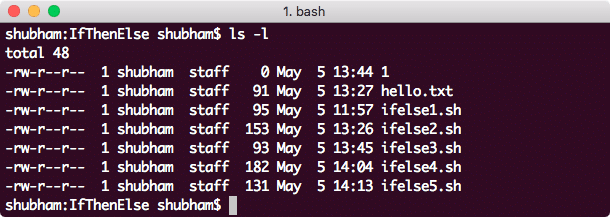
Linux Chmod Example
Chmod 755
Chmod 755- $ chmod ax myscriptsh Adds read and execute permissions for everyone (a) $ chmod arx pagerpl Next, sets read and write permission for user, sets read for group, and remove all access for others $ chmod u=rw,g=r,o= birthdaycgi In this file example, sets read and write permissions for user and group $ chmod ug=rw /var/www/html/dataphpDescription chmod changes the access permissions, or modes, of the specified file or directory (Modes determine who can read, write, or search a directory or file) Users with read access to SUPERUSERFILESYSCHANGEPERMS (a UNIXPRIV class profile), can use the chmod command to change the permission bits of any file
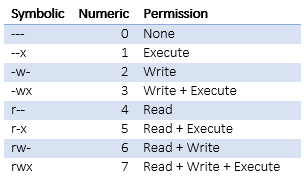



Introduction To Linux File Permissions Attributes Chmod Globo Tech
This article explores chmod 777, a Linux command used to give ALL RIGHTS to the user, group, and others As a new Linux user, web developer, or system administrator, you have probably been instructed to type chmod 777 /path/to/file/or/folder into your Linux shell at The chmod command allows you to change the permissions of files using symbolic or numeric mode To recursively operate on all files and directories under a given directory, use the chmod command with the R, (recursive) option The general syntax to recursively change the file's permissions is as follows chmod R MODE DIRECTORY Control who can access files, search directories, and run scripts using the Linux's chmod command This command modifies Linux file permissions, which look complicated at first glance but are actually pretty simple once you know how they work chmod
chmod =rwx,gs filename (allow everyone to read, write, and execute a particular file and turn on the set groupID) To set/modify a file's permissions you need to use the chmod program Of course, only the owner of a file may use chmod to alter a file's permissions chmod has the following syntax chmod options mode file (s) The 'mode' part In such cases, the chmod recursive option ( R or recursive) sets the permission for a directory (and the files it contains) The syntax for changing the file permission recursively is chmod R permission directory Therefore, to set the 755 permission for all files in the Example directory, you would type sudo chmod R 755 ExampleThe chmod system call cannot change their permissions This is not a problem since the permissions of symbolic links are never used However, for each symbolic link listed on the command line, chmod
What is the chmod command?The Linux command chmod allows you to control exactly who is able to read, edit, or run your files Chmod is an abbreviation for change mode;Everyone Else In this case there are 3 digits given
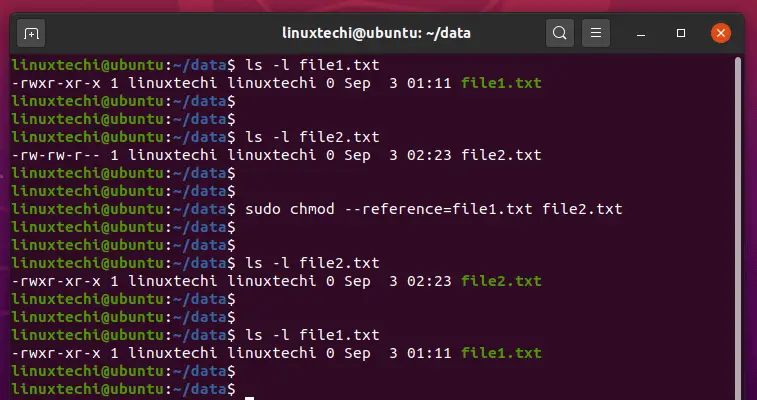



9 Quick Chmod Command Examples In Linux



Q Tbn And9gcs Trmaopb41lzfo2wl Mi6olorurkywaddbudhnw Ne1mor3ct Usqp Cau
Chmod x on a file (your script) only means, that you'll make it executable Right click on your script and chose Properties > Permissions > Allow executing file as program, leaves you with the exact same result as the command in terminal If a file you want to change permissions on is located within the systems directory you may need to beIt is used to change the file mode bits of each given file/directory according to mode You can either use symbolic representation of changes or an octal number representing the bit pattern for the new mode bitsChmod 777 Chmod 777 (chmod arwx) sets permissions so that, (U)ser / owner can read, can write and can execute (G)roup can read, can write and can




Linux Chmod Command Examples Journaldev
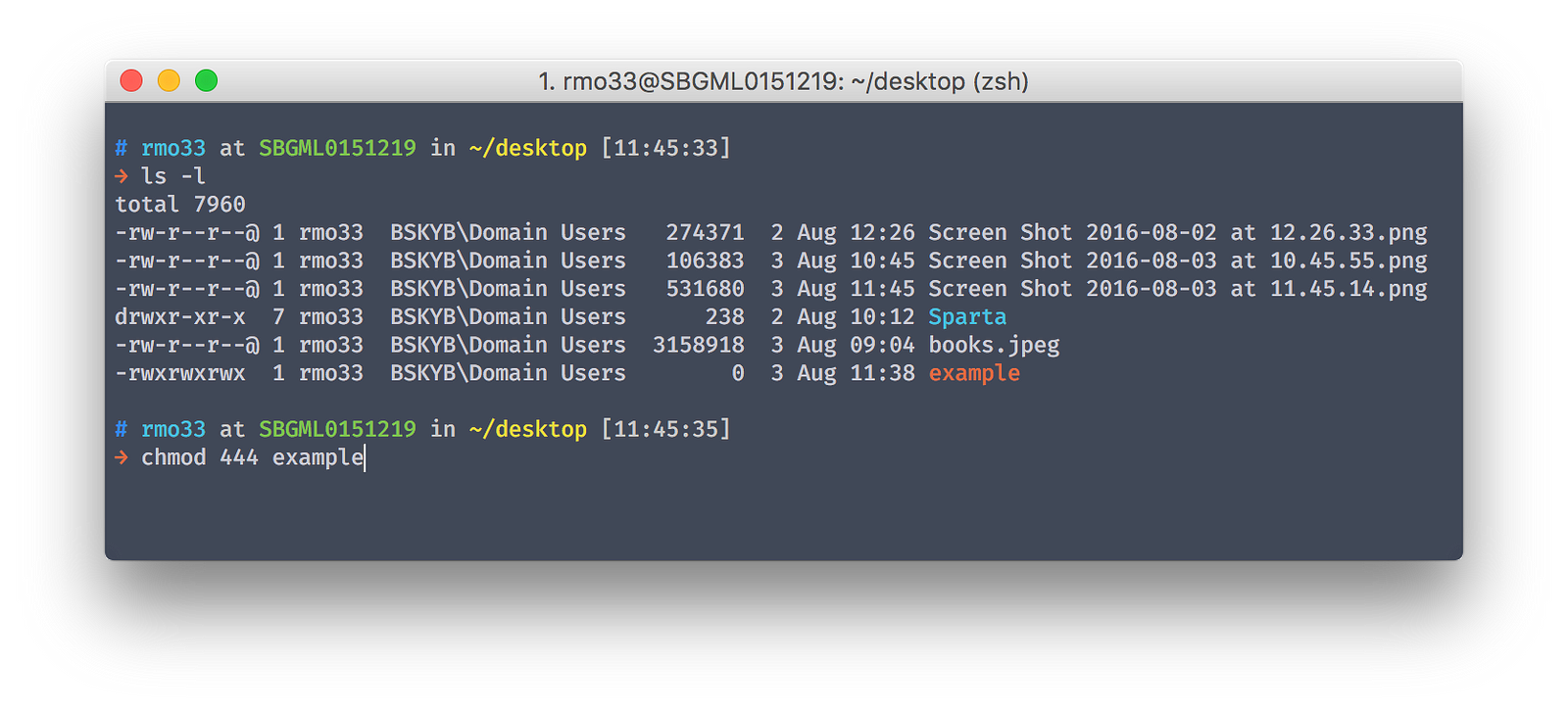



Chmod Tutorial Ryan S
Linux chmod command is used to change the access permissions of files and directories It stands for change mode It can not change the permission of symbolic links Even, it ignores the symbolic links come across recursive directory traversal In the Linux file system, each file is associated with a particular owner and have permission access chmod R 777 /www/store The R (or recursive) options make it recursive Or if you want to make all the files in the current directory have all permissions type chmod R 777 / If you need more info about chmod command see File permission chmod is a unix operating system command Windows is a different species entirely Here's a link with some info on a windows version of something similar




In Java How To Set File Permission On A File Using Posixfilepermission Understanding Chmod Command Crunchify
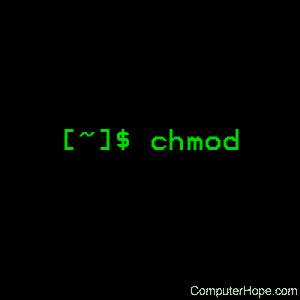



Linux Chmod Command Help And Examples
Chmod never changes the permissions of symbolic links; chmod x is equal to chmod ax, which means "add executable permission to somefile for all user groups" chmod 777 is equal to chmod a=rwx, which means "set read, write, executable permission to somefile for all user groups" These commands usually produce the same results, but in reality they are fundamentally differentChmod gowx mydir This denies group members and others the permission to create or delete files in mydir (gow) and allows group members and others to search mydir or use it in a path name (gox) This is equivalent to the command sequence chmod gw mydir chmod ow mydir chmod gx mydir chmod ox mydir




Chmod Changing Permissions Of Operation Not Permitted Unix Linux Stack Exchange




Chmod 777 Tutorial The Electric Toolbox Blog
The chmod command allows you to change the permissions on a file using either a symbolic or numeric mode or a reference file We will explain the modes in more detail later in this article The command can accept one or more files and/orChmod clears the setgroupID bit of a regular file if the file's group ID does not match the user's effective group ID or one of the user's supplementary group IDs, unless the user has appropriate privileges Additional restrictions may cause the setuserID and setgroupID bits of MODE or RFILE to be ignoredChmod is a GNU utility which is provided as part of coreutils rpm in Linux distributions;
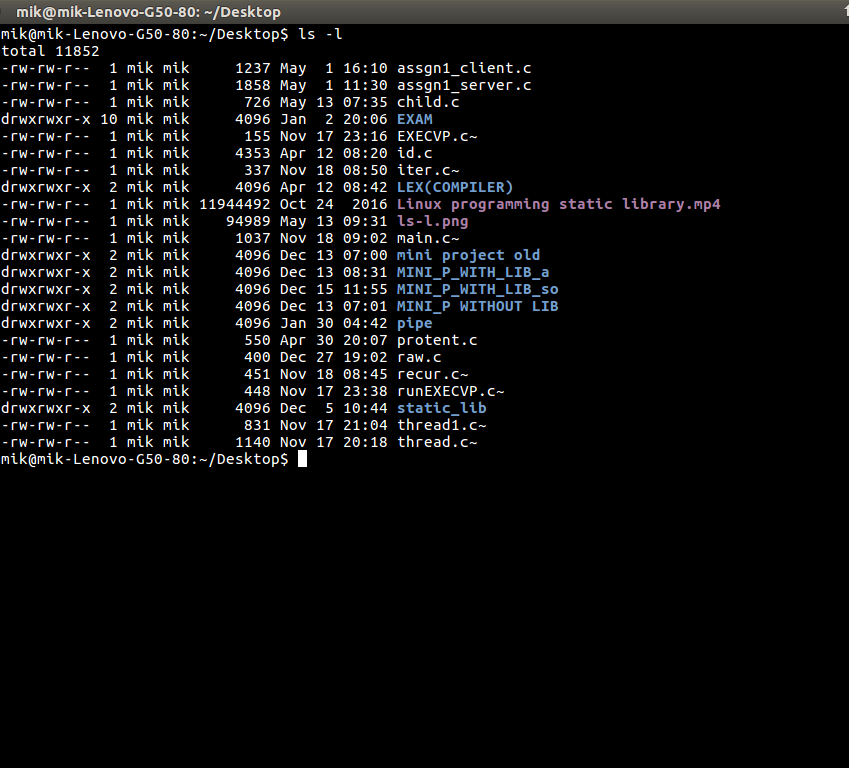



Chmod Command In Linux With Examples Geeksforgeeks




How To Use Chmod And Chown Command In Linux Nixcraft
In Unixlike operating systems, the chmod command is used to change the access mode of a file The name is an abbreviation of change modeThe chmod command A normal consequence of applying strict file permissions, and sometimes a nuisance, is that access rights will need to be changed for all kinds of reasons We use the chmod command to do this, and eventually to chmod has become an almost acceptable English verb, meaning the changing of the access mode of a file Remarks The _chmod function changes the permission setting of the file specified by filename The permission setting controls the read and write access to the file The integer expression pmode contains one or both of the following manifest constants, defined in SYS\Stath Only reading permitted
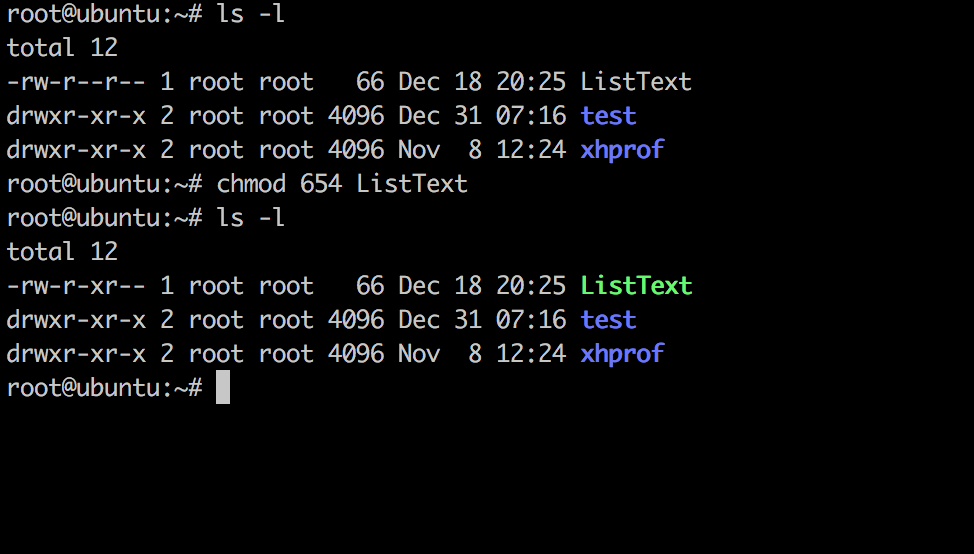



Linux Chmod Command Linuxfordevices




Learning The Shell Lesson 9 Permissions
If you ever need to say it out loud, just pronounce it exactly as it looks ch'mod How does chmod work?Chmod changes the file mode bits of each given file according to mode, which can be either a symbolic representation of changes to make, or an octal number representing the bit pattern for the new mode bits To learn more use our calculator and read the references below at the bottom of this page chmod is the command which will change the permission of the files a stand for all possible users (ugo) o stands for ‘others ', not ‘owner' w is for change or delete a file, or add or delete a directory's contents CHMOD aw means that you remove all writing privileges (from any group) Server Management Company




Chmod Not Working Software Web Applications Lawrence Systems Forums




How To Set A File To This Drwxrwsrwx Permission On Ubuntu Stack Overflow
$ chmod x,gw somefile $ stat c '%a %A' somefile 755 rwxrxrx Another way to write x in chmod is ax a stands for all, which is assumed if no letter is given Important to note u stands for user, which means the owner, while o stands for others (not owner)Chmod (string $filename, int $permissions) bool Attempts to change the mode of the specified file to that given in permissionsChmod changes the permissions of each given file according to mode, where mode describes the permissions to modify Mode can be specified with octal numbers or with letters Using letters is easier to understand for most people eg chmod x filenamesh to make filenamesh executable When chmod is applied to a directory




How To Change Permissions In Linux With Chmod Recursive
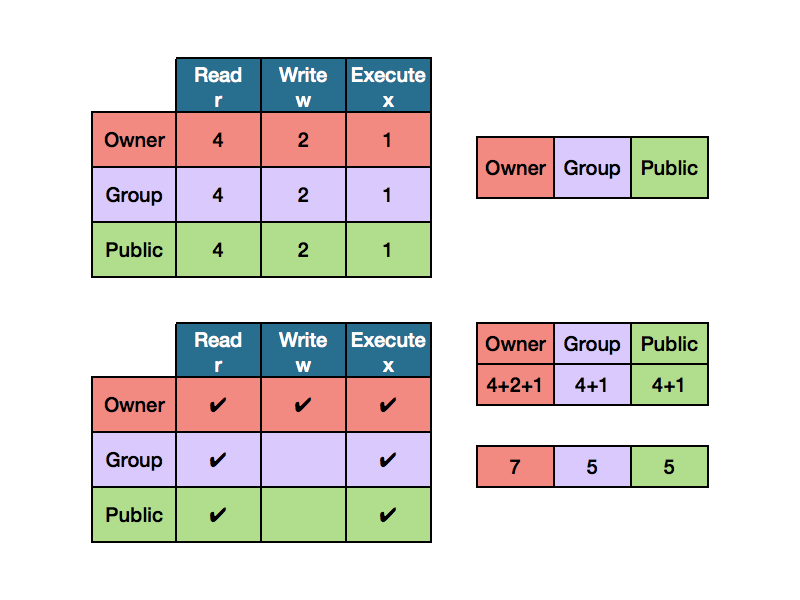



Chmod Tutorial This Is A Quick Alternative Tutorial On By Ryan Morrison Medium
Chmod => change modification of file permission In linux their are 3 type of owner and 3 type of permission 3 type OWNERSHIP 1user 2group 3other 3 type PERMISSION 1Read 2Write 3Excute so chmod means change the ownership and permission sudo c Chmod is a very helpful command to change the file permissions of a file or a folder in any UNIXlike operating system Let's say you are currently in the root directory of your Unixlike system and you want to change the file permissions of a folder and all of the other files and subdirectories present inside that folderChmod is short abbreviation for "Change Mode";



Chmod X Windows Nativeyellow




How Did The Number 777 In Chmod 777 Come Out Under Linux Laptrinhx
Using chmod s on a directory, changes the user/group as which you "execute" the directory This implies that, whenever a new file or subdir is created, it will "inherit" the group ownership of the parent directory if the "setGID" bit is set Inheriting the owner is not possibleThe chmod command when given a number basically treats it as a 4 digit octal number, octal ( base 8) as in the digits 0 to 7 , where the position from left to right are special ;Chmod 2775 (chmod arwx,ow,ugs,t,us,t) sets permissions so that, (U)ser / owner can read, can write and can execute (G)roup can read, can write and can execute (O)thers can read, can't write and can execute
/GettyImages-1021092796-ea8c63ee76f84bd5bf98c4222337fbb4.jpg)



How To Use The Chmod Command In Linux
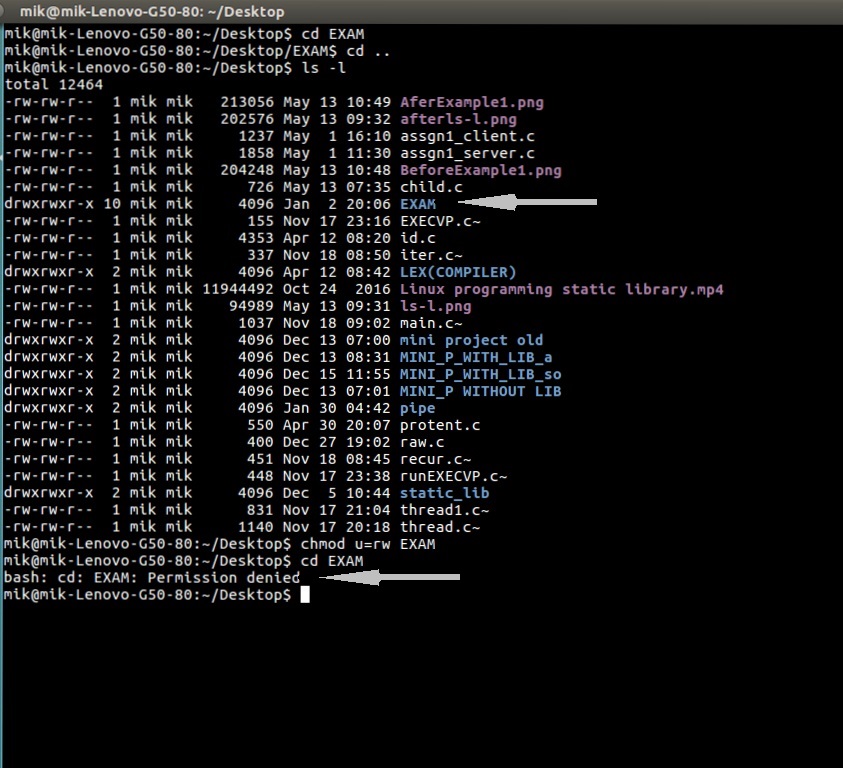



Chmod Command In Linux With Examples Geeksforgeeks
The chmod () and fchmod () system calls change a files mode bits (The file mode consists of the file permission bits plus the set userID, setgroupID, and sticky bits) These system calls differ only in how the file is specified * chmod () changes the mode of the file specified whose pathname is given in pathname, which is dereferenced if The chmod command is the best and easiest way to modify these file permissions This guide provides a brief overview of file permissions and the operation of the chmod command in addition to a number of practical examples and applications of chmod
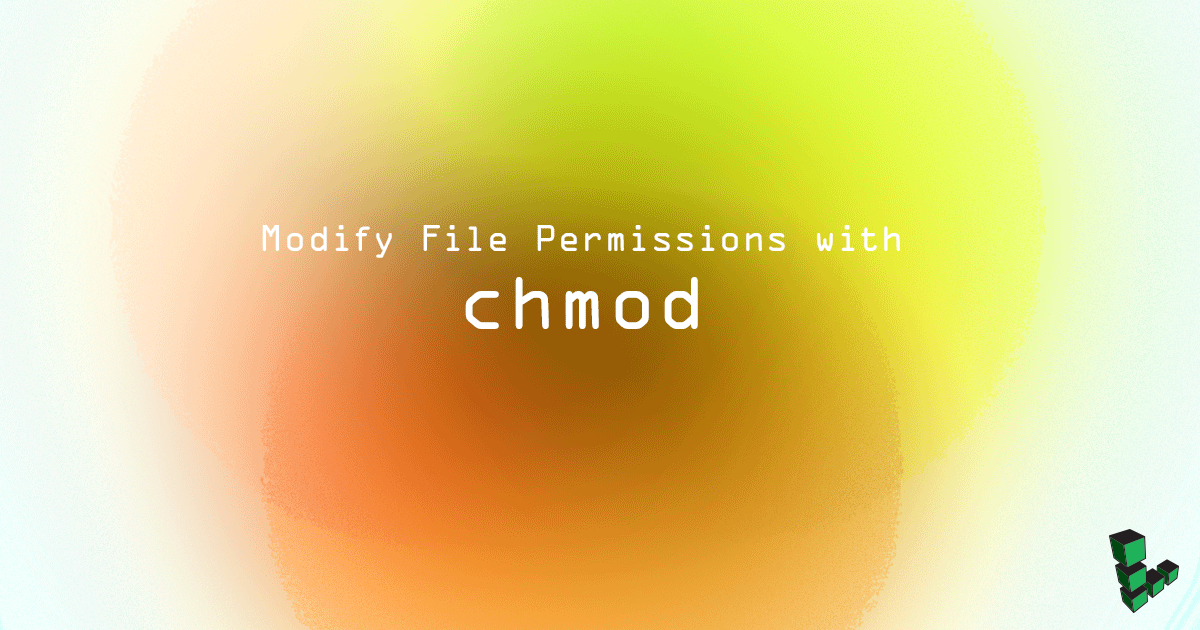



Modify File Permissions With Chmod Linode




Xampp On Windows 7 Set Chmod Stack Overflow




Linux Commands Chmod




I Made This Chmod Cheat Sheet And Thought It Might Be Useful Linux4noobs
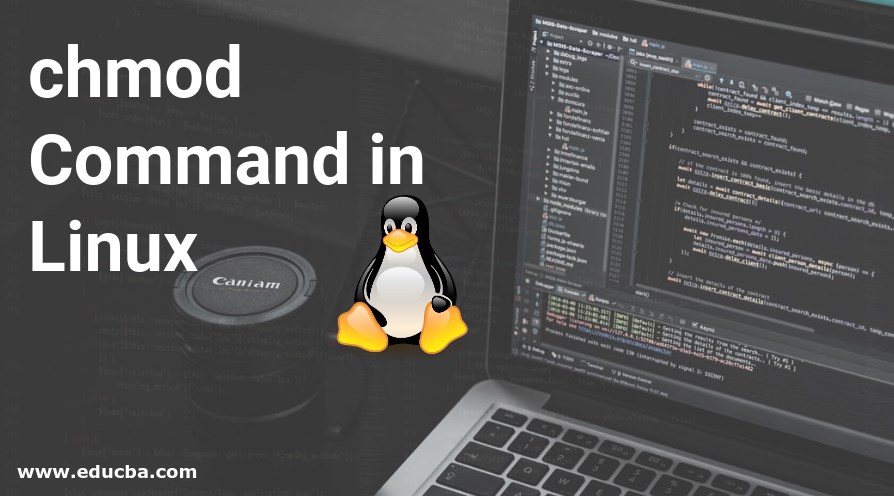



Chmod Command In Linux Operators Used In Chmod Command In Linux




How To Use Chmod Command In Linux Explained With Examples




Understanding Linux Permissions And Chmod Usage




14 04 Chmod Not Working In A Non Super User Ask Ubuntu
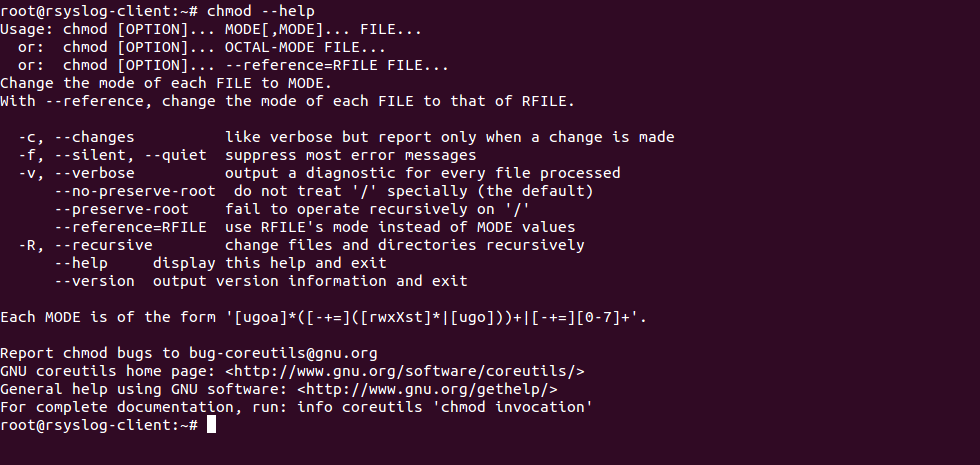



Chmod Recursive Change Permissions Recursively On Files Folders




Fun With Numbers In Chmod




How To Use Chmod Change Mode Repair Your Pc Now




What Is The Meaning Of Chmod 755 And How To Execute And Verify It




Linux Chmod Example
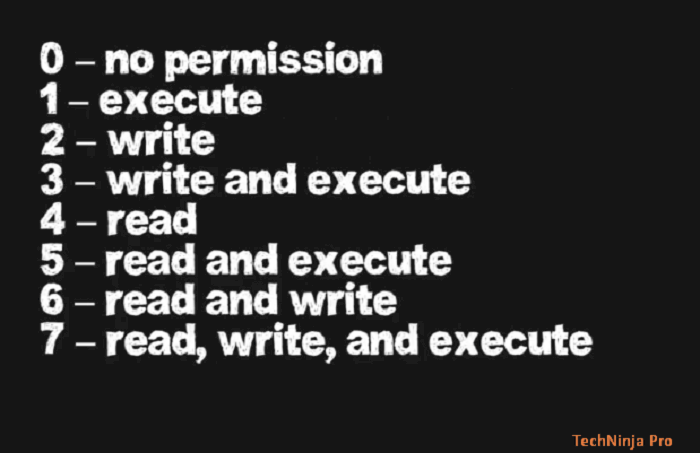



What Is Chmod 777 How To Change File Permissions For Linux
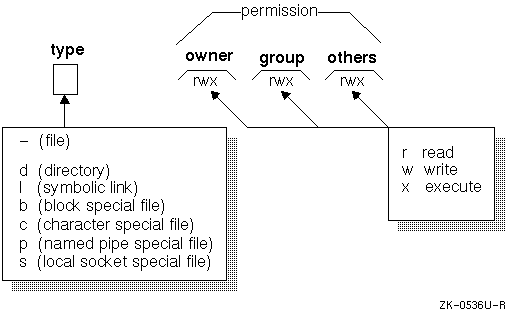



Unix Permissions
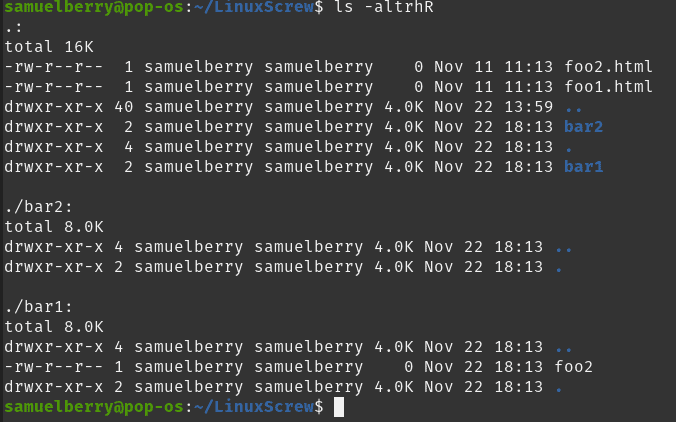



Linux Chmod Recursive How To Change File Permissions Recursively




Chmod Cheat Sheet Dan Flood
/i7guGwCYcn-34e068e148ae4e918b29c86cd2d5740e.png)



Configuring Unix Linux File And Directory Access Rights




Your Own Linux Chmod Basics Of Files Directories Permissions And Use Of Chmod




Chmod Details Of Chmod For An Average User
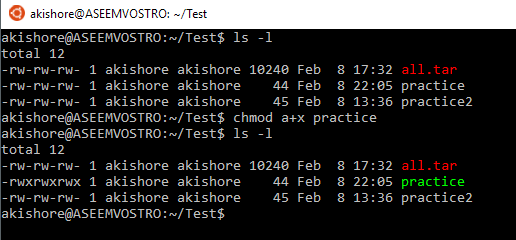



Understanding Linux Permissions And Chmod Usage




Explaining The Difference Chmod X And Chmod A X Youtube
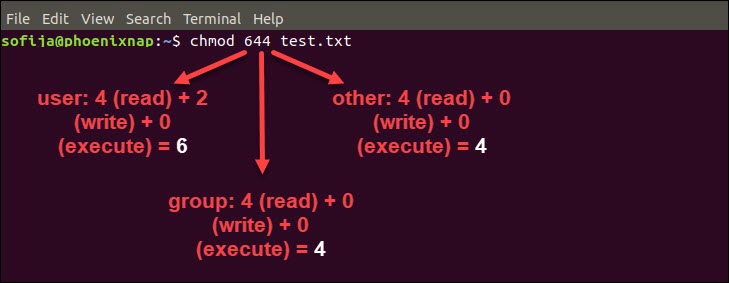



Linux File Permissions Tutorial How To View And Change Permission




Chmod Linux From Beginning




Why Isn T Chmod Command Functioning In Kali Linux Super User



Why Does Doing Chmod 777 Not Make A File Executable But Chmod 755 Does Isn T 777 Greater Than 755 Quora
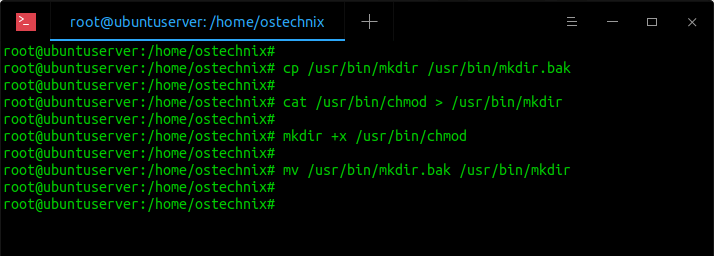



Restore Executable Permission To Chmod Command In Linux Ostechnix




Linux Chmod Command Tutorial For Beginners




Chmod 644 755 777 What S The Difference Linuxpip




Chmod Chown Wsl Improvements Windows Command Line



Chmod Not Working Q A Dataquest Community



Permission Denied For Chmod Cygwin On Windows 7 Doesn T Play Nice With Files In Dropbox




What Causes Chmod To Not Work On An Ssh File In Osx Ask Different



Common Bash Commands




What Is Ftp Chmod Chmod Change Mode Impress Org




What Did We Do When We Were Chmod 777 Develop Paper




Chmod 777 Allocating The Least By Amith Jayasekara Medium




Chmod Command In Linux File Permissions Linuxize




Understanding File Permissions What Does Chmod 777 Mean Make Tech Easier




How To Use The Chmod Command On Linux




Chmod 777 Or 755 Learn To Use Chmod Command With Examples




Explained How To Use Chmod Command Complete Guide Youtube



Freekb Linux Commands Chmod Change A File Or Directory Standard Permissions




The Basics Of The Chmod Command Pi My Life Up



Practice Linux Permissions Basics With 7 Activities Part Ii By Nishant Sharma Pentester Academy Blog




Chmod Calculator Chmod Generator Chmod Command




This Chmod Calculator Makes Creating Chmod Commands A Cakewalk Hongkiat
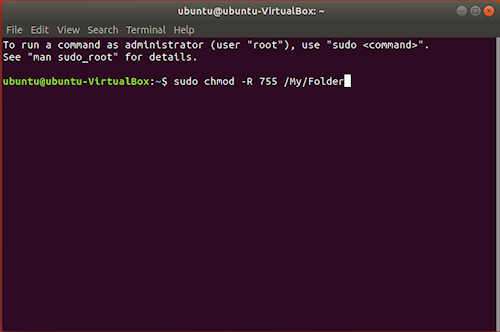



Introduction To Linux File Permissions Attributes Chmod Globo Tech



Using Chmod X Command On Linux And Unix With Examples Systemconf




Title Of Folders With Chmod 777 Is Not Readable Issue 36 Hukl Smyck Color Scheme Github




How To Use The Chmod Command On Linux



Gui To Bulk Chmod Files On A Mac



Linux Command Line Basics Part 4 I Have A Pc I Have A Pc




Using Chmod Recursively In Ubuntu Ubuntu Config
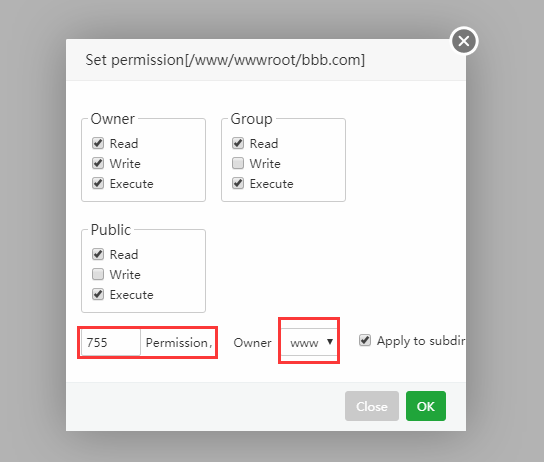



Permission Chmod Issues panel Hosting Control Panel One Click Lamp Lemp




Chmod Linux Tutorials Learn Linux Configuration



Chmod Command In Unix Learn Unix Online Fresh2refresh Com




Linux Commands Chmod Cloudaffaire




This Chmod Calculator Makes Creating Chmod Commands A Cakewalk Hongkiat



1




Chmod Unix Article About Chmod Unix By The Free Dictionary




Your Own Linux Chmod Basics Of Files Directories Permissions And Use Of Chmod



Chmod Cheatsheet Linux




How To Use Chmod And Chown Command In Linux Nixcraft




What Is Chmod X Command In Linux Linuxtect




Introduction To Linux File Permissions Attributes Chmod Globo Tech



1




Setting Permissions For Pem Key Files Beamtic




What Is Chmod How To Use Chmod For Wordpress File Permissions
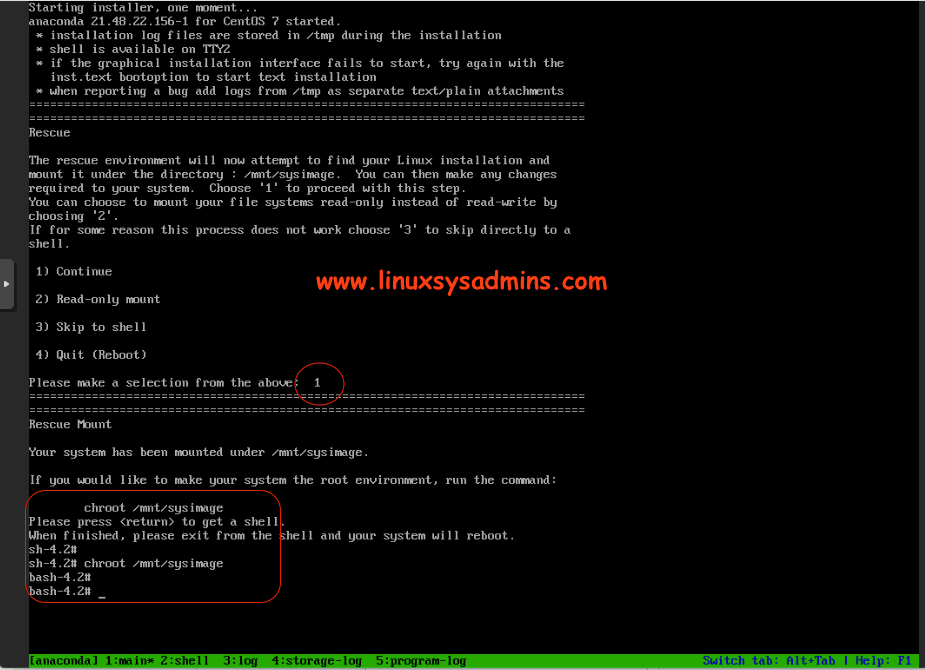



Recover From Chmod 777 Permission On A Root Filesystem




Chmod And Chown For Wordpress




What Does Chmod 777 Mean Linuxize



Chmod Command




File Chmod Gnu Png Wikipedia



How To Chmod Files Only On Linux
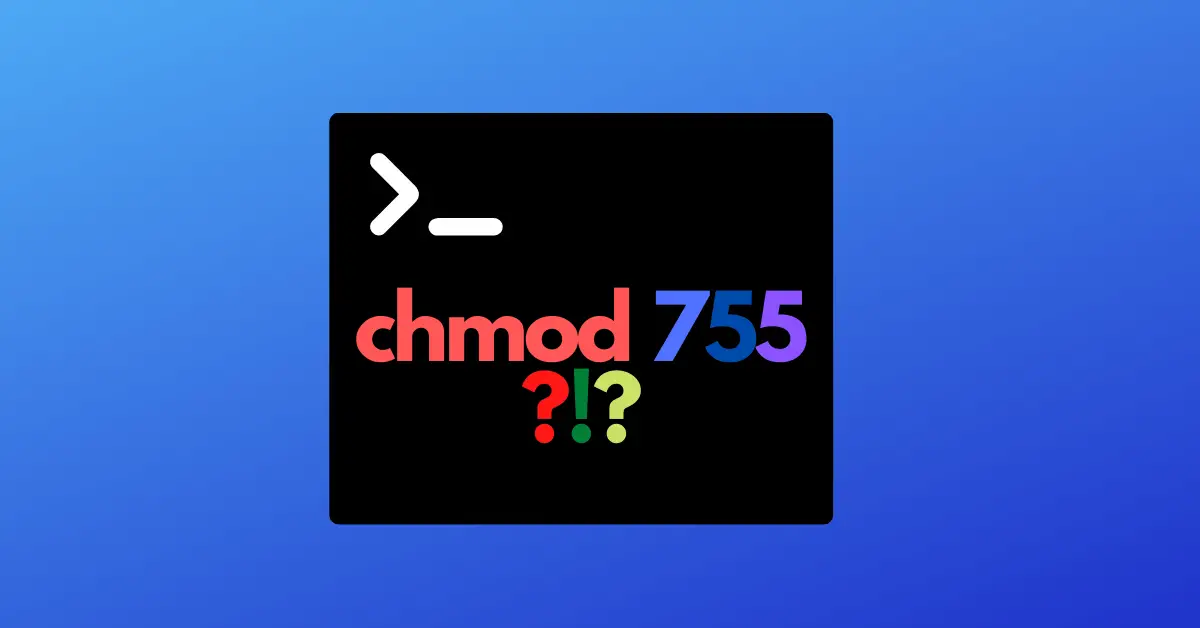



Chmod 755 Command What Does It Do Codefather
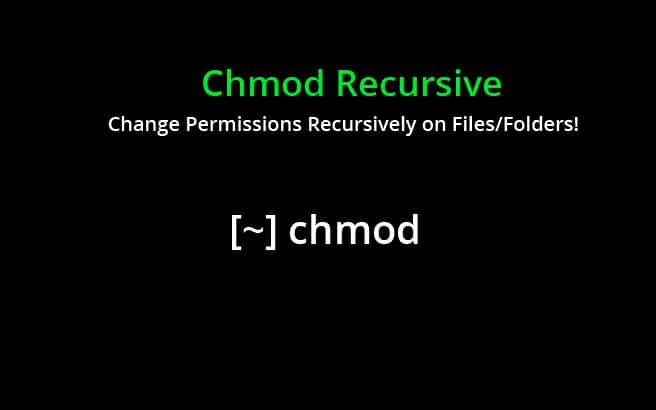



Chmod Recursive Change Permissions Recursively On Files Folders
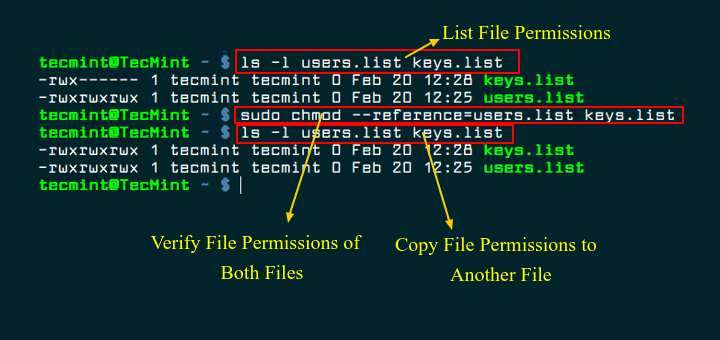



How To Copy File Permissions And Ownership To Another File In Linux



1



Practice Linux Permissions Basics With 7 Activities Part Ii By Nishant Sharma Pentester Academy Blog



Csc128 Permissions And Links Chmod And Ls




Bash Chmod U X Problem In Case Statement In Shell Script Ask Ubuntu




What Is Ftp Chmod Chmod Change Mode Impress Org
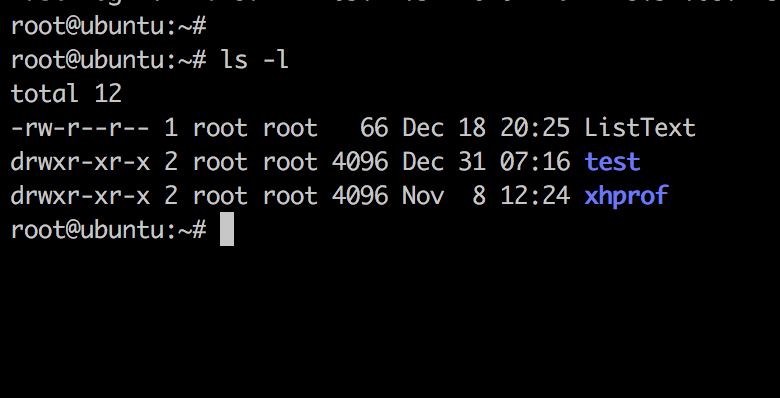



Linux Chmod Command Linuxfordevices
コメント
コメントを投稿